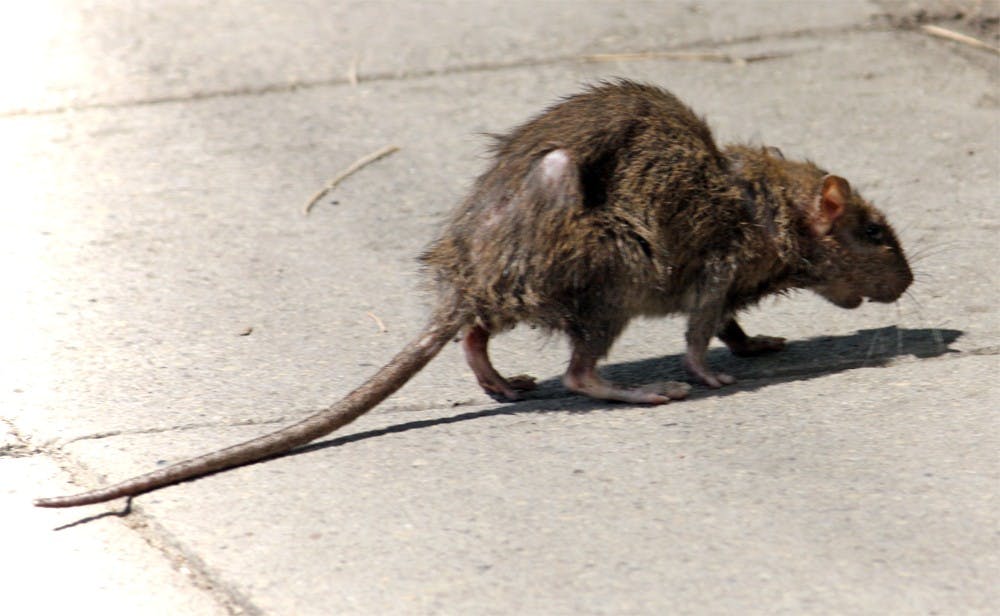Plenty of cities have rats. They are the archetypal urban pest, something seemingly inseparable from city life. However, for some reason, Baltimore seems to have become known for its rat problem.
Yet, parts of the city have embraced the rat as something of a mascot; There is even a whole range of rat-related merchandise which has become ubiquitous in the more affluent parts of the city.
So maybe it’s unsurprising that someone finally made a movie about Baltimore called Rat Film, which premiered in 2016 at the 69th Festival del Film Locarno and was released publicly on Sept. 15 at the Parkway Theater.
What is surprising is how much more the film is about other than just rats. Directed by Baltimore-based filmmaker and photographer Theo Anthony, who has worked for Vice and Agence France-Presse and has produced his own films like Chop My Money and Peace In The Absence of War, Rat Film is a broad vision of Baltimore. It is in part a condemnation of the abuses of power that have taken place here as well as an appreciation for this unique and beautiful place.
Rats tie the story together — a story of both the city and its people — and through them Anthony finds a new approach from which to discuss the history of injustice in Baltimore.
Rat Film is as confusing as it is poignant. The drastic cuts and seemingly disconnected scenes force the viewer to consider how the pieces fit together. There are some fixed points within the film, with Baltimore Rat Rubout worker Harold Edmund being the most prevalent.
Edmund has what is likely the most defining line in the film: “It ain’t never been a rat problem in Baltimore. Always been a people problem.”
Anthony explores both the literal and the metaphorical by following Edmund and other Baltimoreans as they hunt rats throughout the city, as well as delving into the consequences of segregation and redlining.
Baltimore was influential in the development of housing segregation, and during the 1930s the practice was legitimized by the passage of the National Housing Act.
Baltimore neighborhoods shaded red were squalid, impoverished and majority black communities that were rife with rats — among other things. Anthony emphasizes rats as being synonymous with poverty and racial and economic inequality.
That divide in Baltimore is often embodied by Hopkins, which has long had an antagonistic relationship with the city, and Anthony capitalizes on this by telling the stories of experiments conducted during the mid-20th century by the University aimed at curbing Baltimore’s rat population.
The white faces of the Hopkins researchers and the black faces of the population whose struggles are no more than factors to be studied cut a deep contrast, particularly in a city where the most vulnerable are so often the subjects of examination and experimentation.
Anthony’s filmmaking, particularly his often jarring editing, humanizes Baltimore’s rat population, makes them sympathetic symbols of deeper problems. The rat becomes a victim itself, a consequence of institutionalized racism and economic injustice.
Like Edmund says early in the film, there is no rat problem. That sensitive approach to both rats and people, as well as how they coexist in Baltimore, is juxtaposed against certain cold, scientific features.
Throughout the film, the cold and sometimes mechanical voice of Maureen Jones provides commentary. She runs through facts and figures, names and dates, in a way that seems to speak for the dehumanized approach to Baltimore as a city.
In the same vein, Rat Film includes sequences which envision Baltimore as a video game, where players float disconnected from block to block, observing the city as a fixed entity full of faceless people.
The documentary is soundtracked by Baltimore musician Dan Deacon, whose ethereal yet intimidating soundscape underscores the more dystopian features of the film, fitting in well with Jones’ monotone voice over and the sudden, mechanical cuts that splice the scenes together.
To repeat, Rat Film is not just a documentary about rats. The rats are crucial to the story, but they’re ultimately a vehicle analogous to the thousands of abused people living in the Baltimore neighborhoods, which have long suffered due to forces beyond their control.
Anthony sees similarities between the treatment of people and the treatment of rats. Yet, Anthony defies the normal conventions of documentary to make this point far more subjective: He provides a story and the viewer is somewhat left to draw their own conclusions.
Ultimately though, Anthony’s work redeems both the rat as a living thing — not a mere symbol of filth — and the people as individuals, not merely statistics to be studied.
Rat Film is effectively a project of humanization, an attack against forces which seek to turn communities into nothing more than a variable of study.





